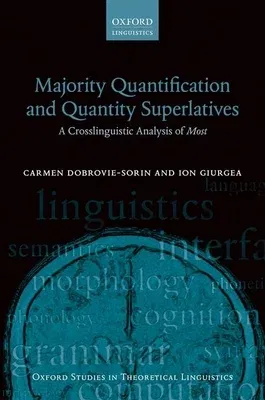Carmen Dobrovie-Sorin
(Author)Majority Quantification and Quantity Superlatives: A Crosslinguistic Analysis of MostPaperback, 31 May 2021

Qty
1
Turbo
Ships in 2 - 3 days
Only 2 left
Free Delivery
Cash on Delivery
15 Days
Free Returns
Secure Checkout

Part of Series
Oxford Studies in Theoretical Linguistics
Print Length
304 pages
Language
English
Publisher
Oxford University Press, USA
Date Published
31 May 2021
ISBN-10
0198791259
ISBN-13
9780198791256
Description
Product Details
Authors:
Book Format:
Paperback
Country of Origin:
GB
Date Published:
31 May 2021
Dimensions:
23.11 x
15.49 x
1.52 cm
ISBN-10:
0198791259
ISBN-13:
9780198791256
Language:
English
Pages:
304
Publisher:
Weight:
498.95 gm